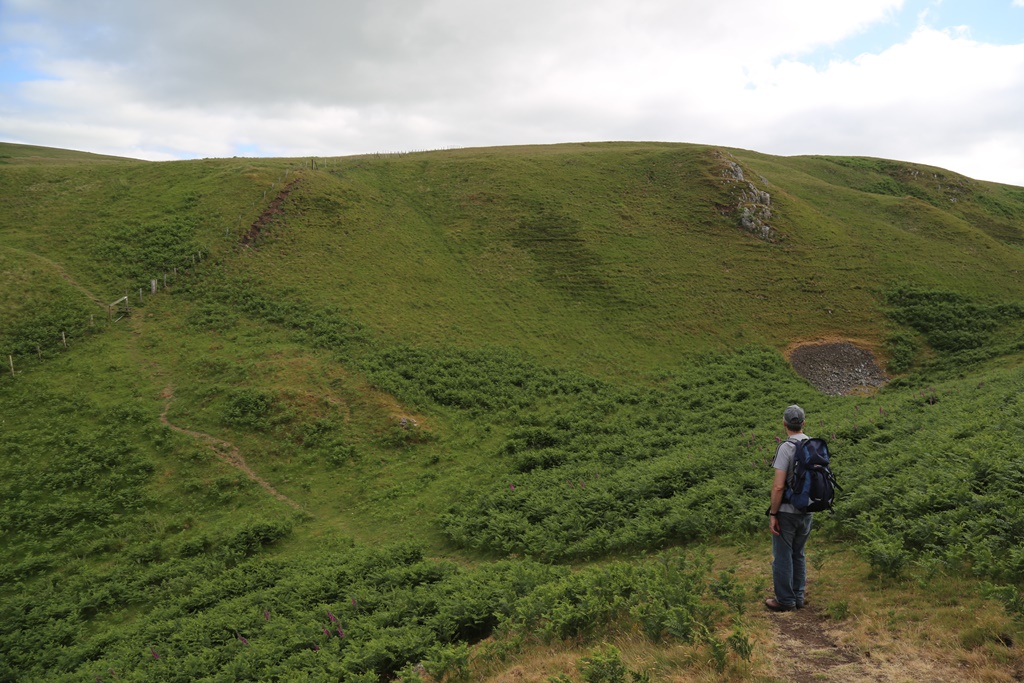The Red Kite Trail at Rowlands Gill is an immersive nature experience that brings you closer to the awe-inspiring beauty of these majestic birds. Nestled within the picturesque landscapes of North East England, this trail offers a unique opportunity to witness the remarkable red kites in their natural habitat. As you venture along the trail, your senses are heightened by the sounds of rustling leaves and distant bird calls, creating an atmosphere of tranquility. The sight of these graceful raptors soaring overhead, with their distinctive russet plumage catching the sunlight, is a true spectacle. The trail not only provides a chance to admire these magnificent creatures but also allows you to connect with the surrounding woodlands and meadows. Whether you’re an avid birdwatcher or simply seeking a serene escape into nature, the Red Kite Trail at Rowlands Gill offers an unforgettable encounter with both wildlife and the enchanting outdoors.
June 2023
The Newcastle to Tynemouth walk is a scenic coastal trail that stretches approximately 9 miles along the northeastern coast of England. Starting in Newcastle upon Tyne, the walk takes you along the banks of the River Tyne, past iconic landmarks such as the Millennium Bridge and the Tyne Bridge. As you continue eastward, you’ll pass through picturesque seaside towns, including North Shields and Whitley Bay, before reaching the beautiful coastal village of Tynemouth. Along the way, you’ll enjoy stunning views of the North Sea, sandy beaches, and historic sites like Tynemouth Priory and Castle. It’s a popular route for walkers and offers a wonderful opportunity to explore the region’s natural beauty and rich history.
St. Mary’s Lighthouse is a beloved landmark located on a small rocky island just off the coast of Whitley Bay in North East England. Perched atop the picturesque St. Mary’s Island, this iconic lighthouse has been guiding ships safely along the North Sea coast for over a century and continues to captivate visitors with its striking beauty and rich history.

The history of St. Mary’s Lighthouse dates back to 1898 when it was first constructed to aid navigation along the treacherous North East coastline. Designed by Thomas Meik, the lighthouse stands tall at 38 meters (125 feet) and features distinctive red and white stripes, making it a prominent and easily recognizable landmark for sailors at sea.
Originally, St. Mary’s Lighthouse was manned by a team of keepers who tended to the light and ensured its smooth operation. The keepers and their families lived in nearby cottages, forming a close-knit community on the isolated island. However, with advancements in technology, the need for onsite keepers diminished, and the lighthouse was automated in 1984. Today, the cottages serve as private residences, adding to the charm and character of the island.
In addition to its operational significance, St. Mary’s Lighthouse has also become a popular destination for tourists and locals alike. Visitors can access the island via a short causeway that emerges during low tide, providing an opportunity to explore the lighthouse and enjoy panoramic views of the surrounding coastline.
Inside the lighthouse, visitors can climb the spiral staircase to the top, where they are rewarded with breathtaking views of the North Sea, the rugged coastline, and the bustling seaside town of Whitley Bay. On clear days, it’s even possible to see as far as the distant shores of Scotland, adding to the allure of this coastal gem.
Aside from the lighthouse itself, St. Mary’s Island offers a variety of attractions and activities for visitors to enjoy. The island is home to a visitor center, where guests can learn about the history and heritage of the lighthouse through informative exhibits and displays. There are also scenic walking trails that wind their way around the island, providing opportunities to spot local wildlife, admire coastal flora, and soak in the peaceful ambiance of this secluded retreat.
Throughout the year, St. Mary’s Lighthouse hosts a range of events and activities, including guided tours, educational programs, and special exhibitions. From family-friendly events to photography workshops and guided nature walks, there’s always something happening on the island to engage and entertain visitors of all ages.
In summary, St. Mary’s Lighthouse is much more than just a navigational aid; it’s a cherished landmark and popular tourist destination that holds a special place in the hearts of locals and visitors alike. With its stunning coastal views, rich history, and array of attractions, St. Mary’s Lighthouse offers a memorable experience that captures the beauty and magic of England’s North East coastline.
Embarking on the walk from Tynemouth to St. Mary’s Lighthouse is a journey of coastal enchantment that encapsulates the beauty of North East England. Starting at the charming Tynemouth village, you’ll meander along the North Sea coastline, treated to breathtaking views of the azure waters and expansive sandy beaches. The path takes you past dramatic cliffs that have stood the test of time, and as you approach St. Mary’s Lighthouse, the iconic structure emerges like a sentinel against the backdrop of the sea. The rhythmic sound of waves crashing against the shore accompanies your steps, creating a soothing soundtrack for your trek. As you finally reach the lighthouse, a sense of accomplishment blends with the awe-inspiring scenery. The walk from Tynemouth to St. Mary’s Lighthouse is not just a physical journey, but a sensory experience that allows you to connect with the natural splendor of the coastline and revel in the tranquility it offers.
Photograph: Alan Dotchin
The Breamish Valley, nestled in the enchanting landscapes of Northumberland, England, is a region steeped in both natural beauty and historical significance. At the heart of this picturesque valley lies the quaint village of Ingram, serving as a gateway to a journey through time and terrain. One of the remarkable features that adorn this landscape is the presence of ancient hill forts, each with its own tale to tell.
Ingram, with its charming cottages and rolling greenery, is an ideal starting point for those eager to explore the Breamish Valley and its surrounding hills. The village exudes a timeless charm, offering visitors a glimpse into rural life against the backdrop of the Northumberland National Park. As one ventures out from Ingram, a world of natural wonders and historical treasures unfolds.
Among the notable sites in the Breamish Valley is the majestic Yeavering Bell, an Iron Age hill fort that stands as a sentinel on the landscape. Yeavering Bell is not merely a geological formation; it is a testament to the strategic acumen of ancient inhabitants who sought elevated grounds for defensive purposes. The remnants of the hill fort reveal insights into the lives of Iron Age communities, their architectural prowess, and their fortification strategies.
The hill fort at Yeavering Bell is characterized by earthworks and defensive structures that once served as protective barriers. Archaeological excavations at the site have unearthed artifacts, providing a window into the daily lives and practices of the people who called Yeavering Bell home. The discovery of pottery, tools, and other remnants showcases the ingenuity and resourcefulness of these ancient communities.
What adds an extra layer of historical intrigue to the Breamish Valley is the multi-period nature of its archaeological sites. Beyond the Iron Age hill forts, evidence of later Anglo-Saxon occupation has been found, linking the past with different chapters of human history. The landscape, dotted with remnants from diverse periods, offers a unique opportunity to explore the continuity and evolution of human habitation in this captivating region.
The Breamish Valley beckons not only history enthusiasts but also nature lovers and outdoor adventurers. The River Breamish meanders through the valley, enhancing its scenic allure. Hiking trails crisscross the landscape, providing opportunities to explore the hills and take in panoramic views. Ingram, with its welcoming atmosphere, serves as a base for those embarking on journeys of discovery, whether it be a leisurely stroll along the riverbanks or a more challenging hike to the hill forts that dot the horizon.
In conclusion, the Breamish Valley, with its charming village of Ingram and ancient hill forts like Yeavering Bell, offers a rich tapestry of history and natural beauty. It is a destination where the echoes of the past resonate through the hills, and where the present-day visitor can immerse themselves in the layered narratives of a landscape shaped by both time and human ingenuity. Whether exploring the remnants of Iron Age hill forts or wandering along the riverbanks, the Breamish Valley invites all who visit to connect with the essence of this remarkable corner of Northumberland.
MAP
The Simonside Hills, nestled in the breathtaking Northumberland National Park in northern England, stand as a testament to the raw beauty and ancient history that characterizes the British landscape. These rolling hills, part of the Cheviot Hills range, offer a haven for outdoor enthusiasts, history buffs, and nature lovers alike.
The Simonside Hills, with their distinctive silhouette, rise dramatically above the surrounding countryside. The landscape is a mosaic of heather-clad moorland, craggy outcrops, and verdant valleys, creating a captivating tapestry of colors that change with the seasons. In the spring, the hills come alive with a burst of wildflowers, while the autumn transforms the landscape into a warm palette of reds and golds. This natural diversity contributes to the allure of Simonside, making it a year-round destination for those seeking a connection with nature.
One of the most iconic features of Simonside is the striking formation known as the “Devil’s Causeway.” This ancient ridge, steeped in folklore, is said to have been constructed by the Devil himself, forming a straight path across the hills. The legend adds an extra layer of mystique to the already enchanting landscape, inviting visitors to explore the historic trails and imagine the tales that may have unfolded in these rugged hills over centuries.
For hikers and walkers, the Simonside Hills offer a plethora of trails catering to various skill levels. The ascent to the summit provides panoramic views of the Northumberland countryside, where the patchwork of fields and distant villages unfolds below. The trek rewards adventurers with a sense of accomplishment and a chance to witness the beauty of the surrounding landscape from a lofty vantage point. As the sun sets, casting its warm glow over the hills, the Simonside experience becomes truly magical.
The wildlife that inhabits the Simonside Hills adds to the area’s allure. Red grouse, curlews, and golden plovers call this region home, contributing to the rich biodiversity of the Northumberland moors. Birdwatchers can revel in the opportunity to spot these winged inhabitants, while nature photographers can capture the untamed beauty of the landscape.
Beyond the natural wonders, the Simonside Hills boast a historical legacy that adds depth to their appeal. Ancient burial cairns dot the landscape, silent witnesses to the lives and rituals of the people who once roamed these hills. Stone circles and remnants of Iron Age settlements further enrich the historical tapestry, allowing visitors to step back in time and connect with the ancient roots of this remarkable terrain.
In conclusion, the Simonside Hills offer a captivating blend of natural beauty, outdoor adventure, and historical intrigue. Whether you seek a challenging hike, a moment of quiet reflection in nature, or a journey through the annals of history, these hills provide an unforgettable experience. Simonside stands not only as a physical landmark but also as a testament to the enduring spirit of the British landscape, inviting all who venture here to become a part of its storied legacy.
MAP
The Farne Islands, located off the Northumberland coast, are a group of stunning islands known for their wildlife and natural beauty. These rocky outcrops are home to thousands of seabirds, including puffins, razorbills, and guillemots. The islands also host a large colony of grey seals, making it a popular spot for wildlife enthusiasts and photographers. Visitors can take boat tours to the islands, exploring the rugged coastlines and witnessing the incredible abundance of wildlife in their natural habitat. The Farne Islands offer a unique and unforgettable experience for nature lovers.
The Farne Islands, a group of small islands off the coast of Northumberland in northeastern England, are a haven for wildlife, rich in natural beauty, and steeped in history. These islands, primarily known for their incredible seabird colonies and diverse marine life, attract nature enthusiasts, birdwatchers, and history buffs alike. Let’s delve into the fascinating aspects that make the Farne Islands a unique and cherished destination.
Location and Accessibility: The Farne Islands are located a few miles off the coast of Northumberland, near the fishing village of Seahouses. The islands are accessible by boat, and several boat operators from Seahouses offer trips to the Farne Islands, providing visitors with the opportunity to explore their wonders.
Seabird Colonies: The Farne Islands are renowned for hosting one of the most significant seabird colonies in the United Kingdom. Each year, thousands of seabirds flock to the islands for breeding and nesting. Common species include puffins, guillemots, razorbills, kittiwakes, and several types of gulls. The islands provide vital breeding grounds, and the cliffs and rocky outcrops become bustling nurseries during the breeding season.
The spectacle of puffins, with their distinctive colorful beaks, is a major draw for visitors. The Farne Islands offer a rare chance to observe these charismatic seabirds up close as they go about their daily activities.
Grey Seals: In addition to the avian residents, the Farne Islands are home to a large population of grey seals. Seal colonies inhabit certain areas of the islands, and boat trips around the Farne Islands often provide opportunities to see these curious and playful marine mammals in their natural environment.
Historical Significance: Beyond their natural wonders, the Farne Islands have a rich history, particularly intertwined with religious and monastic traditions. The most famous of the islands, Inner Farne, is known for its medieval monastery and the renowned naturalist and ornithologist, St Cuthbert.
St Cuthbert, who lived on Inner Farne in the 7th century, is celebrated for his connection with nature and wildlife. Visitors can explore the ruins of the medieval priory and imagine the austere life led by St Cuthbert and his successors.
Visitor Experience: Exploring the Farne Islands offers a unique and immersive experience. Visitors can take boat trips that circumnavigate the islands, allowing for panoramic views of the seabird colonies and seal haul-outs. Some boat operators also offer landings on certain islands, providing the chance to disembark and explore the natural and historical features.
Visits to the Farne Islands are seasonal, with the peak period typically during the seabird breeding season in late spring and early summer. Birdwatchers and photographers flock to the islands during this time to witness the bustling colonies and capture the vibrant displays of birdlife.
Conservation and Protection: The Farne Islands are designated as a National Trust nature reserve and are protected for their ecological importance. Conservation efforts are ongoing to safeguard the delicate balance of the ecosystems on the islands and ensure the well-being of the resident wildlife.
Conclusion: The Farne Islands stand as a testament to the beauty and diversity of nature. From the swirling masses of seabirds overhead to the serene seal colonies lounging on rocky shores, and the echoes of centuries past in the island’s historic structures, the Farne Islands offer a captivating blend of natural spectacle and cultural heritage. Whether you are an avid birdwatcher, a nature enthusiast, or someone seeking a glimpse into England’s rich history, a visit to the Farne Islands promises an unforgettable experience surrounded by the sights and sounds of the Northumberland coast.
MAP
The Farne Islands Ferry offers a gateway to one of the most captivating and wildlife-rich destinations in the United Kingdom. Situated off the coast of Northumberland, England, the Farne Islands are a collection of rocky islets that teem with seabirds, seals, and other marine life, making them a paradise for nature enthusiasts and adventurers alike.
The ferry service to the Farne Islands typically operates from the charming coastal town of Seahouses, serving as the main departure point for visitors eager to explore these remote and enchanting islands. Seahouses itself is a bustling hub of activity, with its bustling harbor, quaint shops, and picturesque coastline providing a perfect starting point for marine adventures.
The journey to the Farne Islands aboard the ferry is an experience in itself, offering passengers stunning views of the Northumberland coast and the open sea. As the boat glides across the water, passengers can keep an eye out for seabirds soaring overhead and playful seals frolicking in the waves, foreshadowing the wildlife spectacle that awaits them on the islands.
Upon arrival at the Farne Islands, visitors are greeted by a kaleidoscope of sights and sounds, as thousands of seabirds nest and breed on the rocky cliffs and grassy slopes. From puffins and razorbills to guillemots and kittiwakes, the islands are home to a remarkable array of bird species, providing unparalleled opportunities for birdwatching and photography.
In addition to its avian inhabitants, the Farne Islands are also famous for their seal colonies, with hundreds of seals congregating on the rocky shores and sandy beaches throughout the year. Visitors can observe these charismatic marine mammals from a safe distance, marveling at their agility in the water and their playful antics on land.
Many ferry operators offer guided tours of the Farne Islands, providing passengers with expert commentary and insights into the islands’ natural history and wildlife. Guided tours may include stops at key birdwatching sites, seal colonies, and historic landmarks, allowing visitors to fully immerse themselves in the unique atmosphere of these remote outposts.
For the more adventurous travelers, some ferry companies also offer opportunities for snorkeling or diving around the Farne Islands, providing a rare chance to explore the underwater world and encounter marine life up close. From colorful kelp forests to hidden sea caves, the waters surrounding the islands are a treasure trove of marine biodiversity, offering unforgettable experiences for underwater enthusiasts.
Whether exploring the islands by boat, foot, or snorkel, a visit to the Farne Islands aboard the ferry is sure to leave a lasting impression on all who venture to this remote and wild corner of England. With its stunning scenery, abundant wildlife, and rich natural heritage, the Farne Islands are a true jewel of the Northumberland coast, beckoning visitors to discover their secrets and marvel at their beauty.
Howick Hall Gardens and Arboretum, situated in Northumberland, England, is a historic estate renowned for its stunning gardens, rich history, and diverse collection of trees and plants. Nestled near the Northumberland coast, this estate has been the home of the Grey family for over 650 years and has evolved into a horticultural masterpiece that attracts visitors from near and far.
The hall itself, a Grade II* listed building, dates back to the 14th century. Over the centuries, the estate has undergone various renovations and expansions, with each generation leaving its mark on the property. The gardens, however, are a highlight that has garnered international acclaim.
The gardens at Howick Hall are a captivating blend of formal and informal landscaping, featuring a diverse range of plants, flowers, and trees. The Earl Grey’s Garden, named after Charles Grey, the 2nd Earl Grey, who served as Prime Minister in the 1830s, is a beautifully designed area that includes terraced lawns, colorful borders, and a charming walled garden. The seasonal displays ensure that visitors can experience the beauty of the gardens throughout the year.
One of the unique aspects of Howick Hall Gardens is the woodland area known as the Arboretum. This expansive collection of trees spans 65 acres and includes species from around the world. The Arboretum is a haven for tree enthusiasts and nature lovers, offering a peaceful and immersive experience as visitors wander through the carefully curated landscape. Informative signage and guided tours provide insights into the history and significance of the various tree species.
The gardens also feature the Long Walk, a picturesque avenue flanked by trees that leads to the coastline. The proximity to the North Sea adds a coastal charm to the estate, and visitors can enjoy breathtaking views of the sea from vantage points within the gardens.
The Howick Gardens and Arboretum are not only a delight for horticulture enthusiasts but also a haven for wildlife. The diverse plant life provides habitats for birds, insects, and other creatures, creating a balanced and ecologically rich environment.
In addition to its natural beauty, Howick Hall Gardens and Arboretum offers events and activities throughout the year. Garden tours, plant sales, and seasonal festivals attract visitors looking to deepen their horticultural knowledge or simply enjoy the tranquil surroundings.
The estate is also connected to historical and political significance through Charles Grey, the 2nd Earl Grey, whose legacy extends beyond the gardens. Earl Grey tea is named after him, and the Grey family played a role in shaping the political landscape of the United Kingdom.
In summary, Howick Hall Gardens and Arboretum is a horticultural gem that seamlessly combines history, natural beauty, and a commitment to conservation. Its well-tended gardens, diverse plant collections, and the peaceful Arboretum create an enchanting experience for visitors, inviting them to explore the estate’s rich history and immerse themselves in the beauty of Northumberland’s landscape.
MAP
Photograph: Alan Dotchin
Ros Castle, located in Northumberland, offers panoramic views of the surrounding countryside. The ancient hillfort’s earthworks are an impressive sight, showcasing its historical significance. Nearby, Hepburn Moor and Bewick Hills provide serene walking trails through heather-covered moorland and gentle slopes. The peaceful landscapes offer opportunities for wildlife spotting and relaxation in nature. Whether you’re interested in history or seeking tranquility in the great outdoors, exploring Ros Castle, Hepburn Moor, and Bewick Hills is a delightful experience in the heart of Northumberland.
MAP
Derwent Water, nestled amidst the breathtaking scenery of the Lake District National Park in Cumbria, England, is a shimmering jewel that enchants visitors with its serene beauty and tranquil ambiance. Surrounded by majestic mountains, lush woodlands, and picturesque villages, this idyllic lake offers a haven for outdoor enthusiasts, nature lovers, and weary travelers seeking solace amidst nature’s splendor.
Stretching over three miles in length and covering an area of approximately 3.7 square kilometers, Derwent Water is one of the most iconic and beloved lakes in the Lake District. Fed by the River Derwent and several smaller streams, the lake boasts crystal-clear waters that reflect the changing hues of the sky, creating a mesmerizing kaleidoscope of colors throughout the day.
One of the highlights of a visit to Derwent Water is exploring its pristine shores and surrounding landscape. A network of footpaths and trails winds its way around the lake, offering breathtaking vistas at every turn. Whether strolling along the tranquil lakeshore, hiking to elevated viewpoints, or embarking on more challenging treks into the surrounding fells, there are endless opportunities to immerse oneself in the natural beauty of the area.
For those seeking a more leisurely experience, cruises and boat tours provide a relaxing way to soak in the scenery and learn about the lake’s rich history and wildlife. Several companies operate cruises on Derwent Water, offering guided tours narrated by knowledgeable local guides who share fascinating stories and insights into the area’s heritage and ecology.
Derwent Water is also a paradise for water sports enthusiasts, with opportunities for sailing, kayaking, paddleboarding, and wild swimming abound. The lake’s calm waters and stunning backdrop make it an ideal playground for aquatic adventures, whether gliding across its surface in a sailboat, exploring hidden coves by kayak, or simply taking a refreshing dip on a hot summer’s day.
Wildlife thrives in and around Derwent Water, with the lake and its surrounding habitats supporting a diverse array of plant and animal species. Birdwatchers can spot a variety of waterfowl, including ducks, swans, and herons, while lucky observers may even catch a glimpse of ospreys soaring overhead or red squirrels darting among the trees.
Scattered along the shores of Derwent Water are several charming villages and historic landmarks that add to the area’s allure. Keswick, the largest town in the vicinity, serves as a bustling hub for visitors, offering a range of amenities, shops, and restaurants. Nearby attractions include the ancient Castlerigg Stone Circle, the picturesque hamlet of Grange, and the majestic peaks of Catbells and Skiddaw, which provide stunning backdrops for outdoor adventures.
In conclusion, Derwent Water is a true gem of the Lake District, captivating visitors with its natural beauty, recreational opportunities, and timeless charm. Whether exploring its shores on foot, cruising its tranquil waters by boat, or simply admiring its scenic vistas from afar, a visit to Derwent Water is sure to leave a lasting impression on all who have the privilege of experiencing its splendor.
Catbells is a picturesque fell located in the Lake District National Park, Cumbria, England. Standing at 451 meters (1,480 feet), it offers breathtaking panoramic views of the surrounding lakes and mountains, including Derwentwater and Skiddaw. The hike up Catbells is a popular choice for both experienced hikers and families, thanks to its moderate difficulty and stunning scenery. The well-marked trail takes you through grassy slopes and rocky paths, providing opportunities to spot wildlife and enjoy the serene beauty of the Lake District landscape. Cat Bells is a true gem for outdoor enthusiasts and nature lovers.












